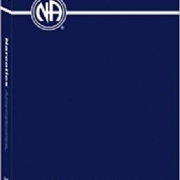Letter from Devonport.
The following is reprint of a letter from one of our members experience in the formative years of NA in Australia. It is a reprint from a 2007 issue of NA Today. Enjoy!
When I first got clean, the compulsion to use drugs was removed completely. I had been racked by the disease for years and then there I was drug free, not even wanting to use. It was indeed a miracle – an unearned gift from beyond. But as time has gone on, life has chopped and changed and there have been many struggles. From time to time the desire to use returned and when I was two years clean it returned with a vengeance. I managed to stay clean but it was then that I realized that the removal of the compulsion, while it was a gift, was also a deal, an ongoing problem that needed upkeep. The compulsion was removed in exchange for helping others get clean. I am responsible for going to meetings, doing service, working with a sponsor and sponsees, doing my steps etc. So it’s both a gift and a deal, either way, it needs maintenance.
My use of mood altering drugs other than alcohol was pretty much confined to two years in which I worked in a US army field hospital in Vietnam. For an enlisted man, just about anything was cheaper and easier to get hold of there than hard liquor. I used quite a few drugs, but generally preferred beer, which I could get plenty of. After leaving Nam, I failed as an addict because I was too shy to score. I only ran into a pusher once. I was walking around Haight-Ashbury in San Francisco when a guy sitting on the steps in front of a house started listing his wares under his breath. I sat down next to him and asked how business was and he took off running. It was much easier to just drink.
When I got to the other fellowship, I was only 28 and could not identify with the stories that dominated the meetings in Sydney 30 years ago. Almost all of them where worse than mine and they tended to be more about what people did than what they were like, and also because they seemed to imply that most solved their problems by just stopping. About the time I last used, I followed some addicts I’d met back to their rehab and started to go to meetings of a fellowship called Drugs Anonymous, which later affiliated and became one of the first NA groups in Australia. Instead of talking about their drug use, they mostly talked about how screwed up they still were, and I could at least identify with that.
I personally believe that I have an addictive personality in that I will overdo anything that makes me feel good. But if addiction is the problem and things like drugs, gambling and overeating are mere symptoms, it does seem a bit strange to me at times that we get bogged down in symptoms instead of recovery from the disease.
If I start using anything to feel good, I would soon be unable to feel good without it. When I was about five years clean, I managed to spill boiling water on my foot before mopping the kitchen floor in a nursing home I worked at in one of my down periods. I developed an allergy to what a doctor gave me to prevent infection and was given an antihistamine for the allergy. I took it according to the prescription, but got to like the stuff so much that it bugged me when the rash went away and I had to flush the rest of it down the toilet. For about a week after that, I would go to meetings and get thirsty for whatever they were talking about. I have just started to take an aspirin a day to prevent heart disease, and it was hard to get myself to start because I have never taken any kind of medicine daily over a longer period than a few weeks.
I moved to Tasmania to retire in 2003, after 20 years teaching English in Japan. When I got here, I found that the NA meeting I thought was here wasn’t, with the weekly meeting of the other fellowship here being the only 12 Step meeting west of Launceston, an hour’s drive to the east. Tony W, another NA old timer, moved here from Sydney shortly after I did, and we have had a meeting going on Monday nights for over two years, with attendance seldom rising above three, but I still love this place and plan to stay here for the rest of my life.
Jim F. Devonport



